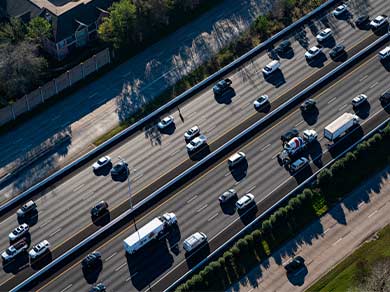You get what you pay for, so the saying tells us. But we all know sometimes that’s not true.
And it hasn’t been true for quite a while in the world of federal highway funding. Each state donates motor fuel tax dollars to the Federal Highway Trust Fund, which then disburses moneys back to them for roadway projects. Texas is one of the few donor states that gives more than it receives—and has for years.
The difference isn’t small. In 2020, Texas gave $4.24 billion, and it got in return only $4.03 billion. Every state but Texas received more than they gave that year. In 2021, Texas was one of only four states that gave more than it got, while Alaska collected more than six times the amount it paid in. “Texans really are paying for projects in other states because of this,” says Jesus “Chuy” Gonzalez, Vice President of Strategy and Infrastructure Development for Pape-Dawson Engineers
On the surface, this probably seems unjust, continues Chuy, but it’s worth asking why it’s the case. A major reason for the imbalance is the use of federal funding formulas that rely on old data. The amount each state receives from the fund is based on that state’s:
- Total lane miles
- Vehicle miles travelled on federal-aid highways
- Fatality count on federal-aid highways
- Contribution to the Highway Trust Fund
- Population
The problem is that the information used for federal calculations is severely outdated. The most-up-to-date formulas that determine Texas’ Federal Highway Trust Fund rate of return rely on 2000 Census data, as well as additional data two decades old or older. To understand the magnitude of the lag, consider that Texas’ population shot from about 21 million at the turn of the century to nearly 30 million in 2020—a 40 percent jump. The Federal Highway Administration estimates that the state has built 35,000 lane miles in that time to accommodate the increased driving of a much larger population. And none of that increase has factored into the calculations that determine how much of its investment in the Federal Highway Trust Fund Texas gets back.
“It’s fortunate that Texas overwhelmingly passed Prop 1 and Prop 7 so we can take care of our infrastructure,” Chuy says. Texas keeps pace on long-term transportation funding with more than $4 billion annually to keep roadways in good shape. Pape-Dawson CEO Sam Dawson, P.E., agrees: “We’re grateful the Texas Legislature passed a budget that fully funds transportation. In addition, we thank Governor Greg Abbott and the Texas Transportation Commission for their support in getting Texas its fair share of the Federal Highway Trust Fund.”
“Texans need our fair share from the Federal Highway Trust Fund. Texas is growing, and our needs are growing, but we’re not getting what we put in,” adds Chuy. In 2019, US Senators and Members of Congress from Texas signed a letter communicating their hopes “that a fair, equitable, and logical approach to federal transportation funding is considered.” For many, that’s a welcome move. “That’s what we hope for, too,” says Chuy. “Big challenges—like the ones we face in transportation—need big ideas. And big ideas need funding.”
Download the article here: Get What You Pay For, Texas! The Need for a Fair Share of Federal Highway Funding
